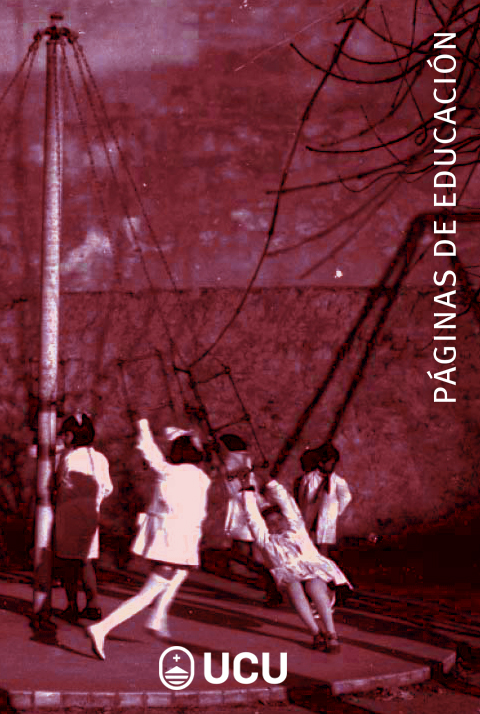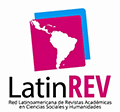Three experiences on flipped classroom to promote the engagement for learning Perceptions of university students
DOI:
https://doi.org/10.22235/pe.v12i2.1836Keywords:
Engagement, Higher Education, Innovation, Flipped classroom, Information and communication technologiesAbstract
This article presents the results of three flipped classroom experiences carried out with university students, with the aim of promoting students' commitment to learning and, at the same time, knowing their assessments of the proposal. The study, conducted in 2017, involved 124 subjects enrolled in various professorships at the Universidad Nacional de Río Cuarto. Each experience was developed using Facebook as a virtual platform. For data collection, a questionnaire of open and closed questions was used, administered at the end of each experience. Among the results, the participation dynamics, interest and autonomy were highlighted as indicators of the commitment perceived by the students towards the new teaching-learning modality. Likewise, the students remarked that the proposal was interesting, suggesting more inverted classes and extrapolating them to other subjects.
Downloads
References
Ames, C. (1992). Classroom: Goals, structures, and student motivation. Journal of Educational Psychology, 84(3), 261-271.
Appleton, J., Christenson, S., Kim, D., y Reschly, A. (2006). Measuring cognitive and psychological engagement: Validation of the Student Engagement Instrument. Journal of School Psychology, 44(5), 427-445.
Arguedas, I. (2010). Involucramiento de los estudiantes y los estudiantes en el proceso educativo. Revista Electrónica Iberoamericana sobre Calidad, Eficacia y Cambio en Educación, 8(1), 63-78.
Blasco, A. C., Lorenzo, J., y Sarsa, J. (2016). La clase invertida y el uso de vídeos de software educativo en la formación inicial del profesorado. Estudio cualitativo. @tic. revista d'innovació educativa, 17. Recuperado de http://www.redalyc.org/jatsRepo/3495/349551247003/349551247003.pdf
Coll, C., y Martí, E. (2001). La educación escolar ante las nuevas tecnologías de la información y la comunicación. En C. Coll, J. Palacios y A. Marchesi (Comps.), Desarrollo psicológico y educación. 2. Psicología de la educación escolar (pp. 623-655). Madrid, España: Alianza.
Cronhjort, M., Filipsson, L., y Weurlander, M. (2018). Improved engagement and learning in flipped-classroom calculus. Teaching Mathematics and its Applications: An International Journal of the IMA, 37(3), 113-121. https://doi.org/10.1093/teamat/hrx007
Eccles, J., y Wigfield, A. (2002). Motivational beliefs, values, and goals. Annual Review of Psychology, 53, 109-132.
Finn, J,. y Zimmer, K. (2012). Student engagement: what is it? Why does it matter? En S. Christenson, A. Reschly, y C. Wylie (Eds.), Handbook Research on Student Engagement (pp. 97-131). New York, NY: Springer.
Fredriscks, J., Blumenfeld, O., y Paris, A. (2004). School Engagement: Potential of the concept state of the evidence. Review of Educational Research, 74(1), 59-109.
García Gómez, A. (2016). Aprendizaje inverso y motivación en el aula universitaria. Revista Pulso, 39, 199-218.
Gómez Hernández, P., García Barrera, A., y Monge López, C. (2016). La cultura de los MOOCs. Madrid, España: Editorial Síntesis.
González González, M. (2010). El alumno ante la escuela y su propio aprendizaje: algunas líneas de Investigación en torno al concepto de implicación. REICE. Revista Iberoamericana sobre Calidad, Eficacia y Cambio en Educación, 8(4), 10-31.
Gros, B. (2015). La caída de los muros del conocimiento en la sociedad digital y las pedagogías emergentes. Education in the Knowledge Society (EKS), 16(1), 58-68. http://dx.doi.org/10.14201/eks20151615868
Gutiérrez Rivas, P. (2016). Las reformas educativas y la incorporación de las TIC en las aulas. La innovación docente y las nuevas tecnologías. En R. Gutierrez Rivas, A. Fernández Delgado, y E. Tabasso (Coords.), Humanizar la utilización de las TIC en educación (pp. 63-79). Madrid, España: Dykinson.
Hutchings, M., y Quinney, A. (2015). The Flipped Classroom Disruptive Pedagogies Enabling Technologies and Wicked Problems Responding to the Bomb in the Basement. Electronic Journal of e-Learning, 13(2), 106-119.
James, A., Chin, C., y Williams, B. (2014). Using the flipped classroom to improve student engagement and to prepare graduates to meet maritime industry requirements: a focus on maritime education. WMU Journal of Maritime Affairs, 13(2), 331-343. https://doi.org/10.1007/s13437-014-0070-0
Karlsson, G., y Janson, S. (2016). The flipped classroom: a model for active student learning. En L. Engwall, E. Corte, y U. Teichler (Eds.), From books to MOOCs? Emerging models of learning and teaching in higher education (pp.127–136). Portland, OR: Press Limited.
Lam, S., Wong, B., Yang, H., y Liu, Y. (2012). Understanding student engagement with a contextual model. En S. Christenson, A. Reschly, y C. Wylie (Eds.), Handbook Research on Student Engagement (pp. 403-419). New York, NY: Springer.
Lino Vital Redó, C. (14 de abril de 2013). Enséñame pero bonito. Video promocional [Archivo de video]. Recuperado de https://www.youtube.com/watch?v=pTeC74Ch3nQ
Martín Rodríguez, D., y Santiago Campión, R. (2016). Flipped Learning en la formación del profesorado de secundaria y bachillerato. Formación para el cambio. Contextos Educativos. Número extraordinario, 117-134. https://doi.org/10.18172/con.2854
Martínez Olvera, W., Esquivel Gámez, I., y Martínez Castillo, J. (2014). Aula invertida o Modelo invertido de aprendizaje: Origen, sustento e implicaciones. En I. Esquivel-Gámez (Ed.), Los Modelos Tecno-Educativos, revolucionando el aprendizaje del siglo XXI (pp.143-160). Veracruz, México: Universidad Veracruzana.
Neri C., y Fernández Zalazar, D. (2015). Apuntes para la revisión teórica de las TIC en el ámbito de la educación superior. RED. Revista de Educación a Distancia, 47, 1-8. Recuperado desde http://www.redalyc.org/articulo.oa?id=54742306003
Newmann, F. M., Wehlage, G. G., y Lamborn, S. D. (1992). The Significance and Sources of Student Engagement. En F. M. Newman (Ed.), Student Engagement and Achievement in American Secondary Schools (pp. 11-39). New York, NY: Teachers College Press.
Norazmi, D., Dwee, C., Suzilla, J., y Nurzarina, A. (2017). Exploring student engagement in writing using the flipped classroom approach. Pertanika Journal of Social Science and Humanities, 25(2), 663-674.
Opazo Faundez, A., Acuña Bastias, J., y Rojas Polanco, M. (2016). Evaluación de metodología flipped classroom: primera experiencia. Innoeduca. International Journal of Technology and Educational Innovation, 2(2), 90-99.
Oscargrcgrc. (11 de febrero de 2017). Imágene holográficas de una ballena en un gimnasio [Archivo de video]. Recuperado de https://www.youtube.com/watch?v=k5YkZ_-7Rps&feature=youtu.be
Phillips, C., y Trainor, J. (2014). Millennial students and the flipped classroom. Proceedings of the American Society of Business and Behavioral Sciences, 21(1), 519–530.
Pintado Giménez, M. M., Sánchez Marín, F., García Solera, J., y Peña Acuña, B. (2016). Prólogo. En R. Gutierrez Rivas, A. Fernández Delgado, y E. Tabasso (Coords.), Humanizar la utilización de las TIC en educación (pp. 13-21). Madrid, España: Dykinson.
Riccetti, A., y Chiecher, A. (2016). Educación y redes sociales. Una experiencia académica mediada por Facebook. Revista Digital Educación, Formación e Investigación EFI-DGES, 2(3). Recuperado de http://ppct.caicyt.gov.ar/index.php/efi/article/view/8277/8221
Rigo, D., y Paoloni, P. (2017). Primera experiencia de clase invertida. Comprometer desde otro lugar. En Ruiz-Palmero, J., Sánchez-Rodríguez, J., y Sánchez-Rivas, E. (Eds.), Innovación docente y uso de las TIC en educación (pp.1-9). Málaga, España: UMA Editorial.
Rigo, D. (2017). Docentes, tareas y alumnos en la definición del compromiso. Investigando el aula de nivel primario de educación. Educação em Revista, 33, 1-24. https://doi.org/10.1590/0102-4698154275
Roehl, A. Reddy, S. y Shannon, G. (2013). The flipped classroom: an opportunity to engage millennial students through active learning strategies. Journal of Family and Consumer Sciences, 105(2), 44-49.
Ros Gálvez, A., y Rosa García, A. (2014). Uso del vídeo docente para la clase invertida: evaluación, ventajas e inconvenientes. En B., Peña Acuña (Coord.), Vectores de la pedagogía docente actual (pp. 423-441). Madrid, España: ACCI.
Sampieri, R., Collado, C., y Lucio, P. (2014). Metodología de la investigación. México, D.F., México: Mc Graw-Hill.
Sánchez García, J. M. (23 de noviembre de 2015). Enséñame pero bonito (corto) [Archivo de video]. Recuperado de https://www.youtube.com/watch?v=bcLcdmS83pY
TED. (2014, setiembre). Takaharu Tezuka | TEDxKioto. El mejor jardín del mundo que jamás hayas visto [Archivo de video]. Recuperado de https://www.ted.com/talks/takaharu_tezuka_the_best_kindergarten_you_ve_ever_seen/transcript?language=es
TEDx Talks. (22 de febrero de 2016). Sorprendizaje: Como acabar con una educación aburrida | Ramón Barrera | TEDxSevilla [Archivo de video]. Recuperado de https://www.youtube.com/watch?v=FXTQq7Ojp94
Tétreault, P. (2006). The Flipped Classroom: Cultivating Student Engagement (Tesis de maestría). University of Victoria, Victoria, Canadá. Recuperado de https://dspace.library.uvic.ca/handle/1828/5086
Vigotsky, L. (1988). El desarrollo de los procesos psicológicos superiores. Barcelona, España: Grijalbo.















